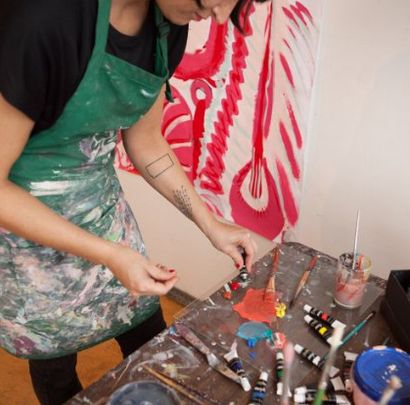1. It’s less than a century old. The initial type of acrylic paint to become commercially accessible was actually polymer-based house paint, which became available in the 1940s.

2. It had been only in the 1950s that acrylics were made commercially accessible. After that, they took off in popularity and they’re remained a high choice for many artists ever since thanks simply with their great versatility.
3. Acrylic paint has lots of its own characteristics, even though it may be easily manipulated to resemble oil paints or watercolour paints. Many artists therefore make use of this type of paint as a substitute for oils or watercolours.
4. Acrylic paint consists of a pigment that’s suspended within an acrylic polymer emulsion binder. The pigment will be the material that offers paint its colour as well as the binder is what holds the pigment with the emulsion.
5. Painting with acrylics gives work a sharp, clear and bold effect. It’s a good choice if you prefer a painting seems really realistic.
6. Acrylic paint will dry quite quickly, though you can add a retarded towards the paint set to slow up the drying process.
7. You can easily paint layers with acrylics, because the paint’s kit is permanent. It is possible to paint one layer along with another as well as the layer that’s been painted over won’t be visible at all.
8. Acrylic paint can be applied to a large number of surfaces. In addition to canvas, it may be put on surfaces including glass, wood, ceramics, plastic, fabric, metals, stones, cars, houses as well as cardboard paper.
9. There are loads of different mediums and substances, including gels, sand and rice, you could add to acrylics to offer them all sorts of different textures. Many artists like experimenting with the addition of various things towards the paint to find out what effects they produce.
10. A polymer painting which includes completely dry out has the tendency to draw dust; once you’ve finished taking care of painting, you should put in a layer of varnish into it to prevent dust gathering about it and damaging it.
11. If you have lots of acrylic paint on your brushes or on your hands, you simply need soap and water to be off.
12. Probably the most famous artists to possess used and experimented with acrylics is Andy Warhol, noted for pioneering the ‘pop art’ concept and movement. Lots of his most recognisable and influential works, including Campbell’s Soup Cans, were completed in acrylics.
13. Acrylic paint is recognized for producing vibrant, loud and solid colours. Paintings completed in acrylic paint be noticeable as they are very eye-catching.
More information about paint set check this useful resource: click for more info


